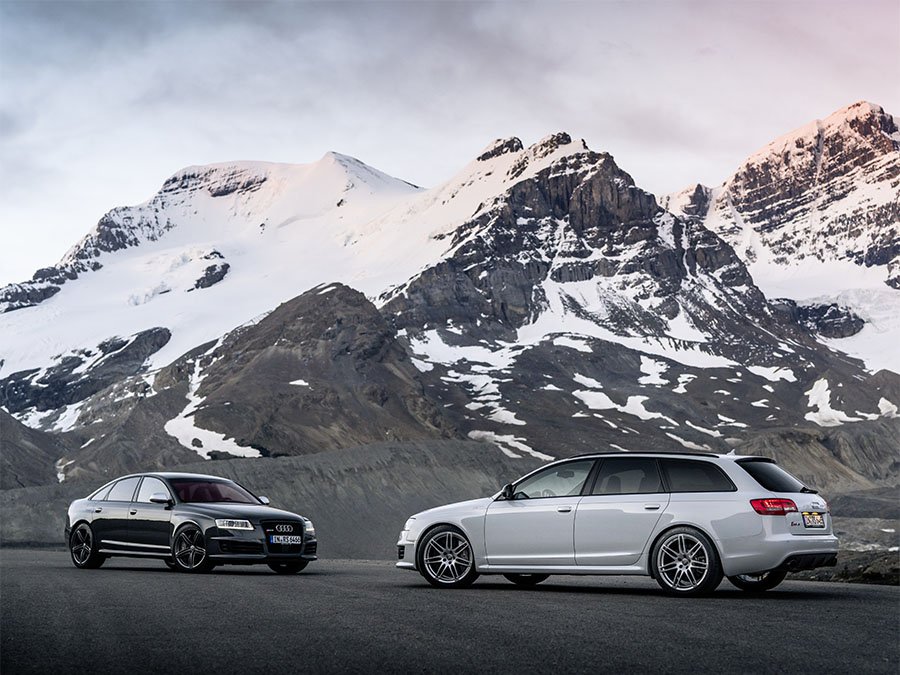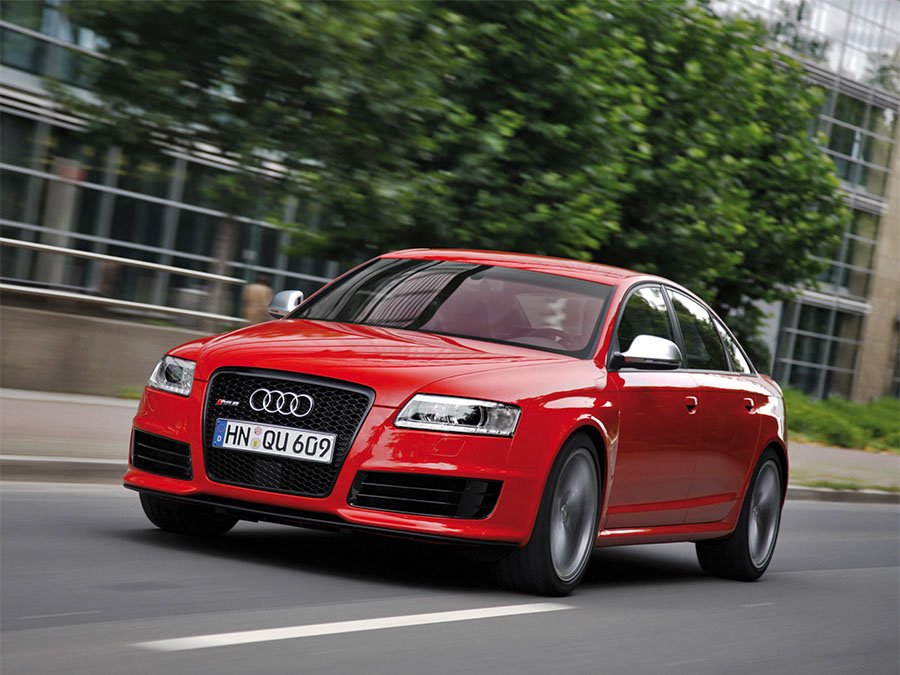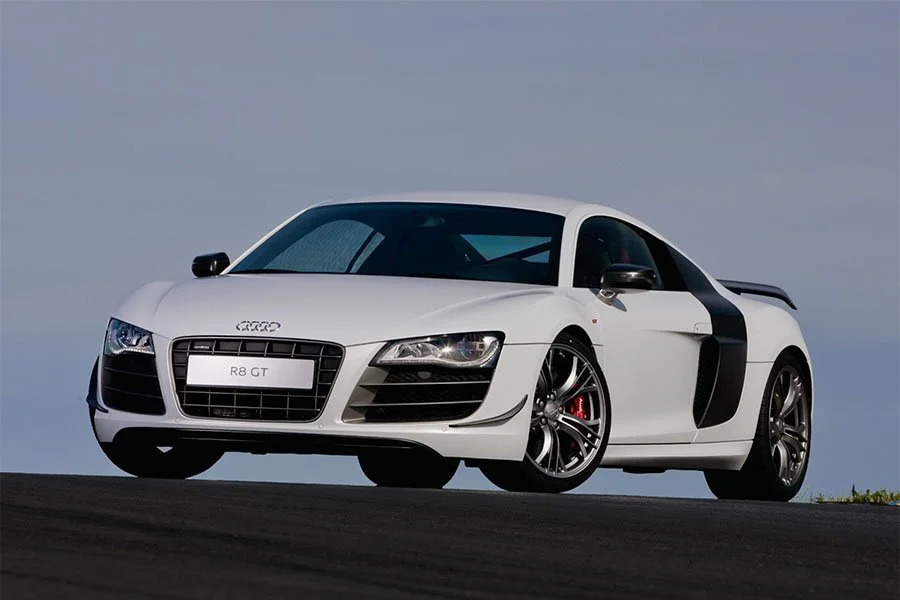Guide: Audi C6 RS6 - a Historic & Technical Appraisal
/BACKGROUND
In 2002, Audi launched their first mid-range RS-badged offering: the C5 RS6. Prior to this, only the more compact B4 and B5-based models had been manufactured in RS trim (the RS2 Avant and RS4 Avant respectively).
Another break with convention had seen the C5 RS6 offered as both an Estate / Station Wagon (Avant) and also a Saloon / Sedan.
To power their new car, Audi turned to Cosworth Engineering in England who developed a twin turbocharged version of the existing dual overhead camshaft normally aspirated V8 used in the S6.
Despite its not inconsiderable price, the C5 RS6 proved a commercial hit and a little over 8000 were built during a brief 26 month production run from July 2002 until September 2004.
Audi’s replacement C6 platform was subsequently introduced for the 2005 model year. It was initially offered with a choice of petrol and diesel engines ranging in size from 2 to 4.2-litres. In typical fashion, this latest A6 was a little bigger than its predecessor. A range-topping 429bhp S6 with 5.2-litre normally aspirated V10 arrived at the Frankfurt Motor Show in September 2005.
However, two years later the S6 was toppled from its perch when the highly anticipated second generation RS6 was launched at the Frankfurt Motor Show in September 2007. Like the previous RS6, it was again offered in both Avant and Saloon body styles as Audi looked to attract customers who might otherwise have purchased a Mercedes-Benz E55 AMG or BMW M5 (both of which were substantially less expensive).
The new RS6 featured Audi Sport’s usual array of upgrades to include enhanced suspension, brakes and wheels plus a variety of special body and interior additions. Of chief concern though was the arrival of an in-house developed twin turbocharged five-litre V10.
Production of the new RS6 took place at the Quattro GmbH plant in Neckarsulm from December 2007. Deliveries of the first Avant versions followed a few weeks later with the Saloons joining the fray from the middle of 2008.
As a consequence of the RS6’s high list price, Audi made the decision not to offer the model in North America.
CHASSIS
Each RS6 started life as a standard C6 pressed steel bodyshell. Compared to the outgoing version, this latest RS6 had an 87mm longer wheelbase (2846mm). It was also 76mm longer overall, 39mm wider and 70mm taller.
Suspension was again fully independent with a four-link arrangement up front and unequal-length double wishbones at the rear. Specific to the RS6 were firmer gas-filled dampers and shorter, stiffer springs that dropped the ride height by 30mm over a standard A6 (and 10mm over the S6).
Another imported feature from the C5 was Audi’s hydraulic Dynamic Ride Control system that altered the pressure of individual dampers so they could provide the right response to changing conditions. This had the effect of reducing body roll during cornering and maintaining a level pitch under extreme acceleration and braking.
The driver could choose from three damper settings via Audi’s new infotainment system: Comfort, Dynamic or Sport.
Enormous new cross-drilled and vented floating iron brake discs were installed all round. The fronts measured 390mm and came with black six-piston Brembo monobloc alloy calipers decorated with Audi’s RS logo. Plain black single-piston calipers were fitted at the rear along with 356mm discs.
The Anti-lock Brake System, Electronic Brakeforce Distribution and Brake Assist were controlled by a Bosch ESP 8.0 Electronic Stability Programme which could be switch off if required.
Audi provided a choice of three wheel types for the RS6.
The standard offering was a 19 x 9-inch five-triple-spoke design although cars destined for some markets (such as the UK) automatically came with bigger 20 x 9.5-inch wheels of the same style (normally an option). The other 20 x 9.5-inch option was a seven-spoke design similar to that seen on the concurrent RS4.
An electronic tyre pressure monitoring system was standard along with electro-mechanical power-assisted steering.
An 80-litre fuel tank from the standard C6 was located under the rear seat.
ENGINE / TRANSMISSION
At the heart of this latest RS6 was the first application of Audi’s twin turbocharged five-litre Type BUH 90° V10 which, although related to those normally aspirated V10 power units found in the R8, S6, S8 and Lamborghini Gallardo, featured over 400 new parts.
The BUH motor was claimed to be the first even firing aluminium block V10 engine produced. Other notable new features included a forged steel crankshaft that spanned its entire length (as opposed to a split pin design) plus forged connecting rods and cast aluminium alloy pistons with newly developed ring packs.
As usual, the engine incorporated an aluminium alloy block and head with dual overhead camshafts, four valves per cylinder and a dry-sump lubrication system. Variable intake and exhaust camshaft timing was over a range of 42° relative to the crankshaft.
Displacement was 4991cc thanks to a bore and stroke of 84.5mm and 89mm respectively (the latter shortened by 3.8mm compared to Audi’s other V10 motors).
Two IHI RHF55 turbos were fitted (one for each cylinder bank) with a boost pressure of 1.6 bar. Charged intake air was cooled by two side-mounted intercoolers. Under the hood were a further seven radiators and four electric cooling fans.
The compression ratio was 10.5:1 (compared to 12.5:1 for the normally aspirated S6).
Other equipment included Audi’s latest Fuel Stratified Injection, two Bosch DI-Motronic MED 9.1.2 engine control units (master and slave), a mapped direct ignition system and Bosch E-Gas electronic drive-by-wire throttle.
With 572bhp on tap at between 6250rpm and 6700rpm, the BUH unit was Audi’s most powerful road car engine yet.
A torque rating of 479lb-ft at between 1500rpm and 6250rpm ensured the engine had much greater flexibility than its predecessor.
In order to cope with the massive amount of torque, Audi opted to install a ZF 6HP28A gearbox. This offered a choice of either fully automatic shifts or manual changes via F1-style paddles behind the steering wheel. A Sport mode for the automatic setting kept the car in gear a little longer for optimised performance. A Powertrain Control Module blipped the throttle on downshifts for smoother shifting.
As per all of Audi’s RS models, this latest RS6 incorporated a permanent four-wheel drive system.
Transmission was through a Torsen T-3 automatic centre differential with conventional open differentials at either end. An Electronic Differential Lock (controlled by the Bosch ESP 8.0) featured an integrated traction control system.
Torque distribution was normally 40:60 front-to-rear but up to 100% of the drive could be sent to the rear and 80% to the front depending on conditions.
BODYWORK
Cosmetically the RS6 differed from the S6 in a number of ways.
The front bumper was re-profiled to incorporate enlarged corner intakes and a discrete matt black chin spoiler. The main intake aperture now came with a matt black hex pattern single-piece grille as opposed to a two-piece egg-crate item with bright metal finish.
New headlamp assemblies featured swivelling Xenon headlights and integrated LED daytime running lights (the latter moved up from the corner intakes).
Down each flank, Audi fitted subtly flared fenders, smooth lower door sections, deeper re-profiled skirts and matt aluminium housings for the exterior mirrors (which were heated and had a memory function).
At the rear was a re-profiled back bumper with a finned matt black venturi and twin instead of four-outlet exhausts. Further up were new LED tail lights.
Audi offered the RS6 with a range of metallic and pearl effect colours as standard.
Body panels were steel with the exception of the hood and front fenders (aluminium) and the bumpers and sills (polyurethane).
INTERIOR
Inside, the RS6 adopted the basic architecture from the rest of the A6 range.
Compared to the S6, Audi fitted RS-embossed sports front seats, a flat-bottomed RS-branded multi-function steering wheel, new RS6-branded gauges and a high gloss Piano Black instrument fascia (instead of natural aluminium). The rest of the S6’s natural aluminium cockpit inserts were also replaced – carbonfibre was the default material although matt brushed aluminium, Piano Black or fine grain myrtle nutmeg wood were available as no cost options.
Left-hand drive cars came with aluminium foot pedals.
Instrumentation comprised a large 8000rpm tachometer and matching 300kmh / 200mph speedometer between which was a digital read out for all manner of information. Outboard of the main gauges were smaller read outs for fuel and water temperature.
Buyers could choose from Black or Silver Silk Nappa leather with contrast stitching, Black leather with matching alcantara inserts or Metallic Black Valcona leather with Jet Grey stitching (all no cost options). The standard colour combinations were an all Black interior or a Silver interior with pale grey seats, door inserts and headliner.
The long list of standard equipment included dual zone climate control, electric front seats with driver’s side memory function, heated front and rear seats, cruise control, a 13-speaker Bose audio system with DAB radio, surround sound and six-disc CD shuttle, Bluetooth connectivity, DVD-based satellite navigation, Audi Multi Media Interface with seven-inch screen, light and rain-sensors for automatic activation of lights and wipers and remote central locking.
OPTIONS
For this latest RS6, Audi offered a far wider array of options than had been the case for the C5 variant.
Performance upgrades included bucket seats (only available with Valcona leather and no memory function) and a sports exhaust. There were also two higher-rated top speed restrictors: one that allowed the car to run until 174mph (Dynamic Pack) and another that went to 189mph (Dynamic Pack Plus).
Sporty cosmetic enhancements included the aforementioned wheel options and a stealth pack that saw nearly all the car’s bright metal trim (window frames, exhaust tips, roof rails, front grille shroud etc.) finished in black.
Comfort options included electric door closure, privacy glass, twin-pane heated and UV insulating glass, Black Nardia microfibre headliner, an electrically adjustable steering column, a HomeLink garage door opener, a memory function for front passenger seat, side and rear blinds and a ski bag. Two types of electric sunroof were offered: a conventional version and a solar panel type that enabled the climate control to function even when the engine was turned off.
Buyers could additionally specify mobile phone connection complete with privacy handset, a voice control system, a TV tuner (with digital and analogue reception), adaptive cruise control, Audi Parking Assist System Advanced and an Advanced key.
On offer through Audi’s Exclusive range were special paint and interior colours, extended leather, coloured seatbelts and a choice of wood finishes for the cockpit inserts (fine grain maple copper, oak sepia, fine grain ash nougat, quilted maple gold, poplar saffron and poplar agate).
WEIGHT / PERFORMANCE
As a consequence of its bigger engine and bodyshell, the C6 RS6 was quite a bit heavier than before.
The Avant tipped the scales at 2025kg (a gain of 160kg) while the Saloon came in at 1985kg (a gain of 145kg).
Nevertheless, thanks to the extra power and torque on offer, the 0-62mph time dipped from 4.9 seconds to just 4.6 seconds.
In standard trim, a 155mph electronic speed limited was fitted.
In completely unrestricted form (something Audi did not offer), a top speed of around 205mph was reputedly possible.
2009 MODEL YEAR CHANGES
For the 2009 model year (production of which began in September 2008), Audi installed a new 3G multimedia interface and added some new options.
The improved 3G arrangement featured a moveable joystick on top of the main control knob and a hard-disc-based navigation system with Traffic Message Channel functionality and 3D mapping.
Audi also fitted a chrome start / stop button for cars with keyless go and a chrome-tipped parking brake switch.
The most exciting new option was carbon front brake discs (Carbonfibre-reinforced Silicon Carbide). Only available in conjunction with 20-inch wheels, the SGL Carbon discs had a massive 420mm diameter and came with grey-painted eight-piston Alcon monobloc alloy calipers complete with Audi Ceramic logo.
Other new options included a carbon design package for the engine bay and high beam light assist.
RS6 PLUS
In February 2010, Audi announced a limited run of 500 RS6 Plus variants to mark the end of production.
Two iterations were offered: the RS6 Plus Sport (priced at €3250) and RS6 Plus Audi Exclusive (at €8310).
Both came with the Dynamic Pack Plus (derestricted to 189mph), the carbon design package for the engine compartment, 20 x 9.5-inch five-triple-spoke wheels, a leather covered instrument hood and centre console, RS6-branded floor mats and an individually numbered cockpit plaque.
The Exclusive version additionally included any paint and upholstery combination from Audi’s Exclusive selection plus seat upholstery, controls, door trim inserts, front centre armrest and door armrests in leather.
END OF PRODUCTION
Production was discontinued in August 2010 by which time 8000 examples of the C6 RS6 are understood to have been completed.
Of these, around 6500 were Avants and the remaining 1500 Saloons.
A C7-based RS6 followed three years later (in 2013).
Text copyright: Supercar Nostalgia
Photo copyright: Audi - https://www.Audi.com








































